Know How to Block Ads by Trust Media Viewer
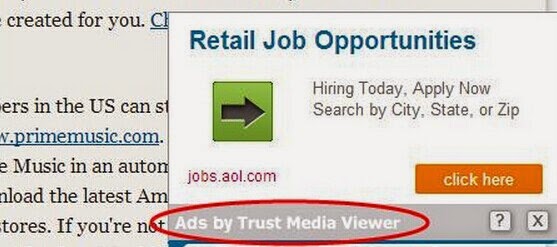
Ads by Trust Media Viewer cannot be blocked by tools such Adblock, or removed by system protection software, we need to manually find out and delete associated malware files deeply hiding in Registry and other folders. If you are still having tough time to handle this Ads by Trust Media Viewer virus, follow the steps below to delete the adware step by step Feel free to get professional help from MiTechMate 24x7 Online PC Expert if you cannot understand and complete all the steps.
Why Does Antivirus Program Can’t Remove Ads by Trust Media Viewer?
Ads by Trust Media Viewer is belong to one of the most stubborn virus made with advanced technology, it can deeply root in your system without restriction from your firewall or antispyware. Besides, virus makers are familiar the security rules and methods that a antivirus uses, therefore they can create some virus like Ads by Trust Media Viewer with codes able to bypass antivirus detection and removal. To get rid of such a kind of tricky virus, manual removal is the most effective way. If you are experiencing a hard time on removing Ads by Trust Media Viewer, complete all stets below and you will get your healthy PC back.Remove Ads by Trust Media Viewer step by step
(Please carefully read the notes before you start to remove any file :This guide is based on the first version of Ads by Trust Media Viewer, but this infection keeps adding its features and updating its codes, files and locations, thus you may not be able to find out all its related files listed below. It requires expert skills and experience to identify all the files of Ads by Trust Media Viewer infection, if you are not familiar with it, do not risk to delete any file by yourself, since you may disable your PC for deleting wrong files which are crucial for your system. This guide is just for reference, we do not promise it will work for all the victims of different PCs in varied situations and conditions. Any problem and consequence incurred by your mistake should be borne by yourself.)
Step1: Remove suspicious and unwanted browser add-ons, toolbars and extensions installed recently:Internet Explorer (IE)
• Open Internet Explorer, click on the "gear icon" at the top right corner, then click on "Manager add-ons".
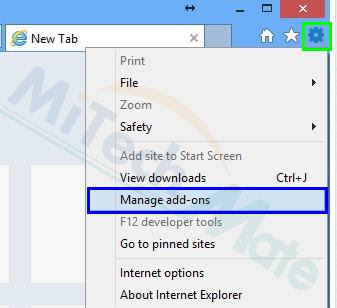

* Mozilla Firefox
• Click the "Tools" at the top of the Firefox window and Select Add-on
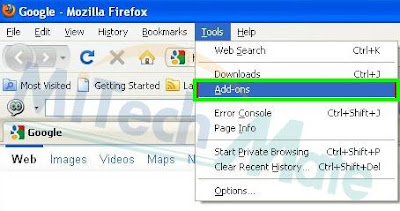
• At the tab of “Extensions”, click on the “Remove” to uninstall unknown and suspicious extensions like Speed Analysis, BrowserProtect,and Webcake.
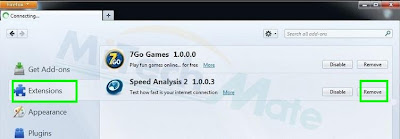
* Google Chrome
• Click to the Menu button on top right corner of Chrome >> select "Tools" and click "Extensions";
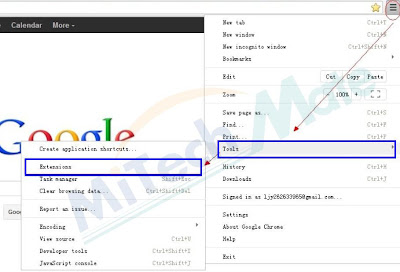
(Free software installed on or near the date that the virus appeared)
Windows 8 users 1. Press Windows key and I key together on your keyboard to open the Settings Charm Bar:
2. Click Control Panel on Settings Charm Bar and then click Uninstall a program in Control Panel:
3. Find out and Uninstall associated programs from the Programs and Features list:
Windows Vista and 7 users
1. Click Start button and then click Control Panel on the Start Menu:
2. Click Uninstall a program in Control Panel:
3. Find out and Uninstall associated programs from the Programs and Features list:
Windows XP users 1. Click Start button >> click Settings on Start Menu >> Click Control Panel
2. Click Add or Remove Programs in Control Panel and remove associated programs:
Step 3: Show all hidden files:
On Windows XP
- Close all programs so that you are at your desktop.
- Click on the Start button. This is the small round button with the Windows flag in the lower left corner.
- Click on the Control Panel menu option.
- When the control panel opens click on the Appearance and Personalization link.
- Under the Folder Options category, click on Show Hidden Files or Folders.
- Under the Hidden files and folders section, select the radio button labeled Show hidden files, folders, or drives.
- Remove the checkmark from the checkbox labeled Hide extensions for known file types.
- Remove the checkmark from the checkbox labeled Hide protected operating system files (Recommended).
- Press the Apply button and then the OK button.
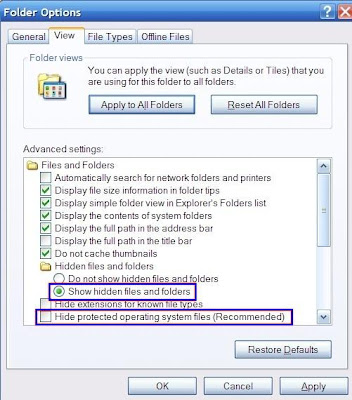
On Windows 7 / Vista
- Click and open Libraries
- Under the Folder Options category of Tools , click on Show Hidden Files or Folders.
- Under the Hidden files and folders section, select the radio button labeled Show hidden files, folders, or drives.
- Remove the checkmark from the checkbox labeled Hide extensions for known file types.
- Remove the checkmark from the checkbox labeled Hide protected operating system files (Recommended).
- Press the Apply button and then the OK button.
On Windows 8 /8.1
- Click on Windows Explorer ;
- Click on View tab;
- Check the "Hidden Items" box
Step 4: Delete Ads by Trust Media Viewer Virus associated files
%SystemRoot%\system32\%Temp%\ %AllUsersProfile%\Application Data\.exe %UserProfile%\Start Menu\Programs\random.lnk AppData\Roaming\Nosibay\random.exe" /winstartup
Step 5: Terminate these Registry Entries created by Ads by Trust Media Viewer.
Method 1 (Available on Windows XP, Windows 7 /Vista, and Windows 8 /8.1):
- Call out “Run” box by pressing “Windows” key + “R” key on your keyboard;
- Type "Regedit" into the Run box and click OK to open Registry Editor
Method 2 (Available on Windows 7/ Vista):
- Click on Start button to open Start Menu
- Type "Regedit" into the search box and click on Regedit to open Registry Editor
HKLM\Software\Microsoft\Internet Explorer\Search,SearchAssistant = HKLM\Software\Microsoft\Internet Explorer\Search,CustomizeSearch = NDOM CHARACTERS] %AppData%\[RANDOM CHARACTERS]\[RANDOM CHARACTERS].exe HKEY_CURRENT_USER\Software\Microsoft\Windows\CurrentVersion\Uninstall\Antivirus Security Pro Virus\ShortcutPath “%AppData%\[RANDOM CHARACTERS]\[RANDOM CHARACTERS].exe” –u HKEY_CURRENT_USER\Software\Microsoft\Windows\CurrentVersion\RunOnce\[RANDOM CHARACTERS] %AppData%\[RANDOM CHARACTERS]\[RANDOM CHARACTERS].exe HKLM\Software\Microsoft\Internet Explorer\Main,Local Page = C:\Windows\SysWOW64\blank.htm HKCU\Software\Microsoft\Internet Explorer\Toolbar,LinksFolderName =
Step 6: Set Your DNS as Google’s public DNS (8.8.8.8):
(Available on Windows 7/ Vista and Windows 8 / 8.1)



No comments:
Post a Comment
Note: Only a member of this blog may post a comment.